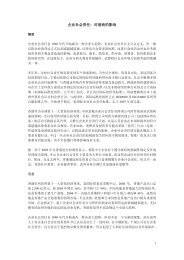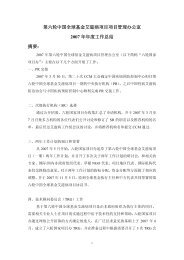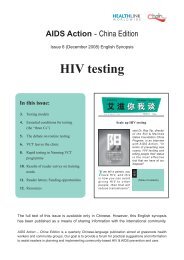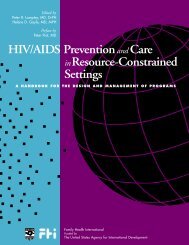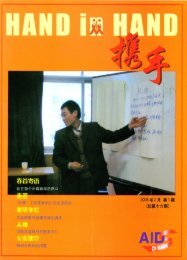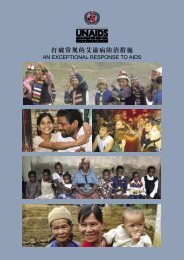The Training of Trainers Manual - UNFPA
The Training of Trainers Manual - UNFPA
The Training of Trainers Manual - UNFPA
You also want an ePaper? Increase the reach of your titles
YUMPU automatically turns print PDFs into web optimized ePapers that Google loves.
Day 6<br />
<strong>The</strong> second attitude is ‘youth as recipients’. Read the text from the handout or the<br />
flip chart, or ask a volunteer to do so.<br />
Youth as recipients: Adults allow young people to take part in decision-making<br />
because they think the experience will be ‘good for’ the young people.<br />
If read by a volunteer, ask him or her to give an illustrative example.<br />
Explain that some adults have this attitude, which patronizes youth. Adults with<br />
this attitude think that involving youth will be a ‘good experience’ for them as they<br />
transition into adulthood but that youth participation is only somewhat useful and<br />
not important to the programme. Thus, youth are allowed to conduct only trivial<br />
activities (‘It won’t matter if they mess up’) or activities that adults do not want to<br />
do. In fact, this attitude <strong>of</strong>ten results in adults’ treating youth as tokens. An example<br />
is remembering at the last moment to include youth on a panel or in a discussion.<br />
Refer the participants to Hart’s Ladder <strong>of</strong> Participation (Handout 16. From<br />
Youth Participation to Youth-Adult Partnerships) which depicts participation on<br />
a continuum, from manipulation and tokenism, which do not constitute real<br />
participation, to higher levels <strong>of</strong> participation in which young people initiate,<br />
direct, and share decisions with adults.<br />
Ask that participants who can relate to this attitude to put up their hands.<br />
Ask them if they ever have felt belittled or demeaned by adults simply because<br />
they are young.<br />
To further explain the ‘youth as recipients’ attitude, refer back to the previous<br />
example: ‘Let’s say that I hold this attitude. With David, I might plan and develop<br />
the poster’s message and layout, and then allow David to choose a colour for the<br />
text. Or I might have David put the posters up in schools, because I don’t want to<br />
and don’t have time.’<br />
<strong>The</strong> third attitude, which is what we are working to achieve, is ‘youth as partners’.<br />
Read the text from the handout or flip chart, or ask a volunteer to do so.<br />
Youth as partners: Adults respect young people as having something significant<br />
to <strong>of</strong>fer and recognize the great impact youth bring to a project. Youth are<br />
encouraged to become involved.<br />
Adults who have this attitude treat youth with respect. As a result, everyone gains<br />
from the partnership.<br />
Section 2. Guidelines for <strong>Training</strong> <strong>of</strong> <strong>Trainers</strong><br />
121




